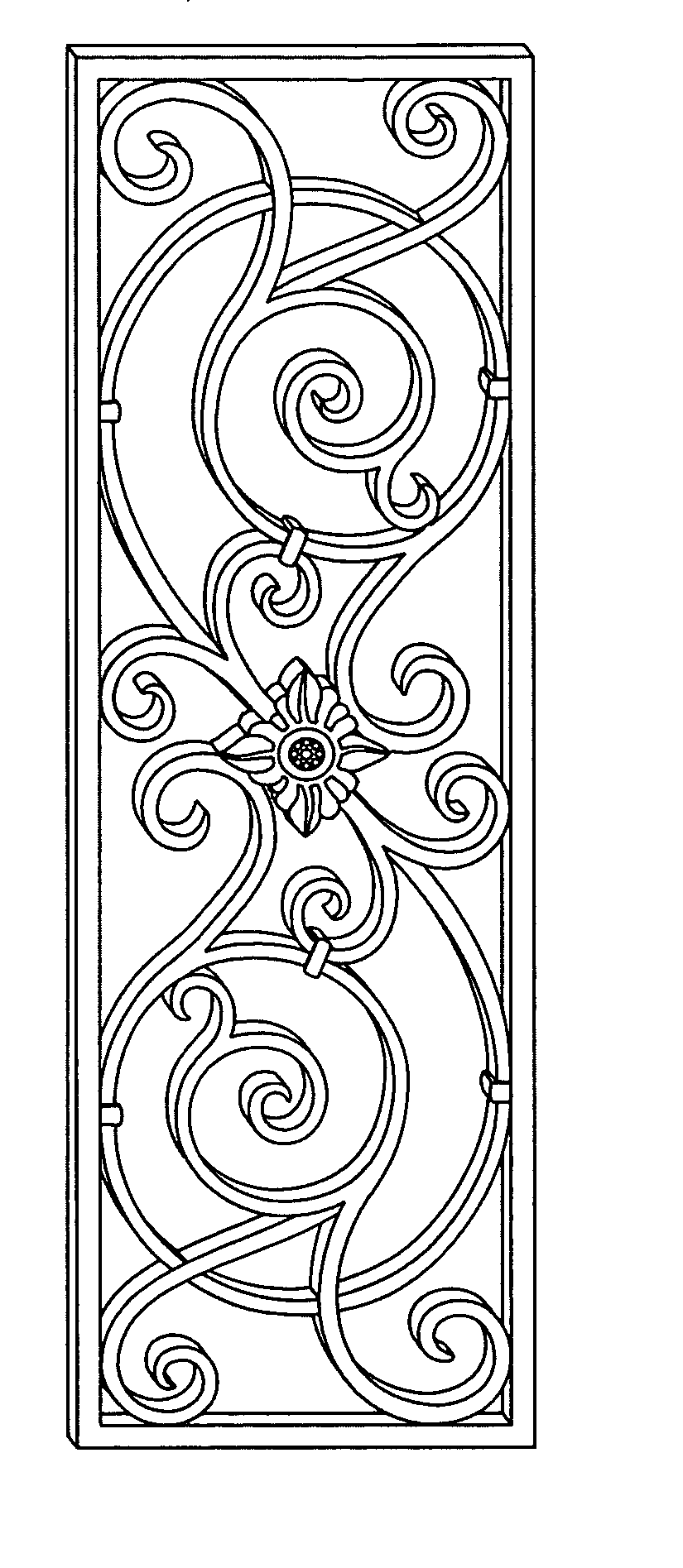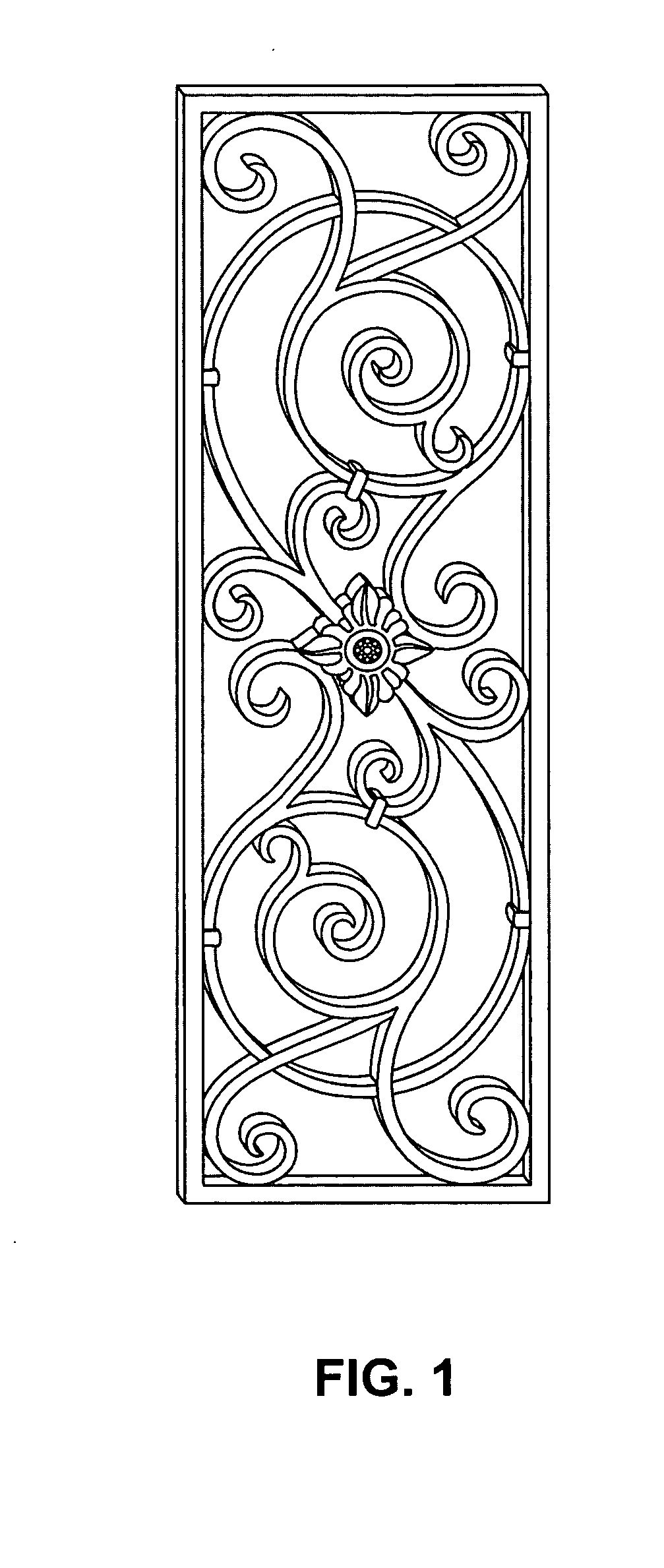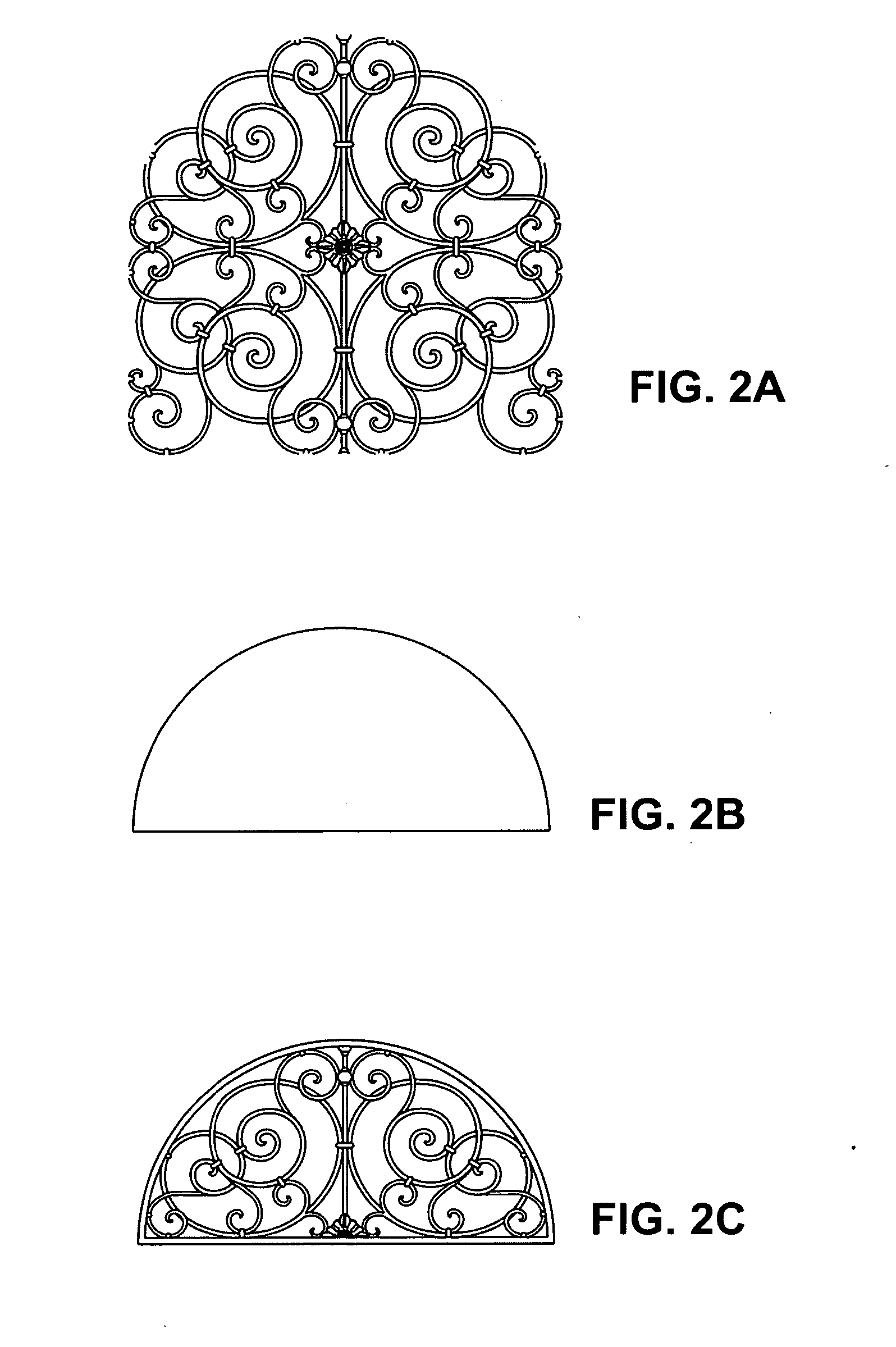Decorative lattice structure and methods for manufacturing and installing same
a lattice structure and decorative technology, applied in special ornamental structures, trap doors, floors, etc., can solve the problems of reducing the possibility of design innovation and/or variety, the design options of shutters and blinds are also very limited, and the look of high cost is not good for all windows. , to achieve the effect of reducing the mass production cost and high cos
- Summary
- Abstract
- Description
- Claims
- Application Information
AI Technical Summary
Benefits of technology
Problems solved by technology
Method used
Image
Examples
Embodiment Construction
[0062] The invention in a preferred embodiment is a highly customizable lattice like material used primarily in (but not limited to) window treatment / decoration applications. The invention is also used as a decorative solution for cornices, room dividers, niches, wall decoration, door inserts, ceiling decorations (e.g., medallions), stand alone decoration, headboards, furniture accent elements among various other applications in which the feel and look of decorative ironwork and the flexibility of shapes and sizes is desired.
[0063] Preferred embodiments of the invention simulate the look and feel previously obtained in traditional crafted ironwork (including, e.g., wrought iron works, cast iron works, or the combination thereof). It can replicate or simulate design features and manufacturing techniques that conventionally use materials such as iron, steel, bronze or other metals in combination with fabrication techniques such as casting, forging, bending, turning, welding, solderin...
PUM
 Login to View More
Login to View More Abstract
Description
Claims
Application Information
 Login to View More
Login to View More - R&D
- Intellectual Property
- Life Sciences
- Materials
- Tech Scout
- Unparalleled Data Quality
- Higher Quality Content
- 60% Fewer Hallucinations
Browse by: Latest US Patents, China's latest patents, Technical Efficacy Thesaurus, Application Domain, Technology Topic, Popular Technical Reports.
© 2025 PatSnap. All rights reserved.Legal|Privacy policy|Modern Slavery Act Transparency Statement|Sitemap|About US| Contact US: help@patsnap.com



